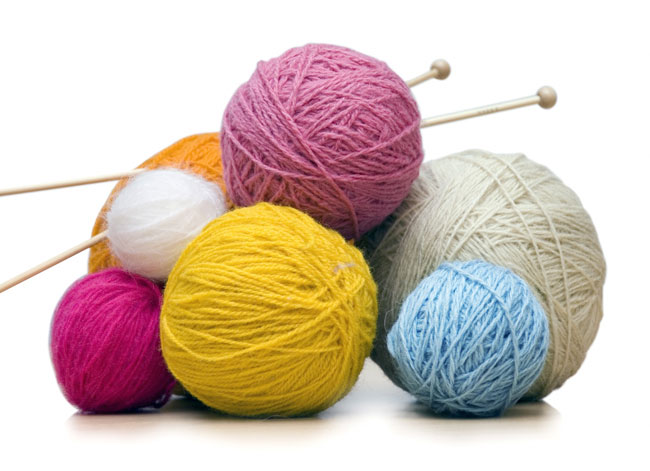Knitting with knitting needles
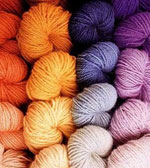
Tired of monotonous "cloned" things,which, moreover, are at a high price? Then try to connect the necessary thing with your own hands! Fashionable cardigan or openwork blouse for you, warm socks and mittens for a child, a cozy cardigan for a beloved man - all this is within your power.
Learning to knit on knitting needles is easy. Mastering the simplest techniques takes very little time, and a thing made with your own hands is especially pleasant to wear.
Beginning of knitting of the conceived product follows withmodel selection. Modern magazines offer many ready-made diagrams and patterns, literally with step-by-step guidance. However, a beginner in knitting some schemes and designations may not be understandable, which makes the product seem excessively complicated.
So, for knitting need knitting needles and yarn. Knitting needles there are different: ordinary, stocking, circular, auxiliary. Normal spokes are straight, can be of different length and diameter. The diameter of the spoke corresponds to its number, therefore, for example, the designation of "needle No. 2" should be understood as "spokes 2 mm in diameter".
Yarn for knitting can be the most diverse. In addition to traditional woolen knitting threads, cotton yarn, silk, cashmere, mohair, angora, as well as yarn from a mixture of different fibers are also used.
When in accordance with the selected product modelnecessary knitting needles and yarn, it's time to start knitting. Knitting any product begins with a set of loops. The loops are typed on the spokes in different ways, depending on the type of edge that you want to get.
With the traditional set of loops, the loops areTwo knitted needles and tighten so tightly as the knitting must be tight. By the density of knitting is meant the number of loops per unit length of the knitted fabric (usually 10 cm).
For set of loops from the coil the thread is removed, the length of which is twotimes the width of the future canvas. Clamp the working end of the thread on the left hand palm, the thread must pass over the index finger and loop around the thumb. The working end of the thread and the thread coming from the tangle, tighten the three remaining fingers of the left hand. Pull the thread between the thumb and forefinger of the left hand, pushing them apart.
Lower the knitting needles from the bottom to the loop on a largefinger, grab the thread from the index finger and drag it into the loop on the thumb. Loop off the buttonhole and repeat the procedure. In the same way, continue to dial the loops until you reach the desired amount.
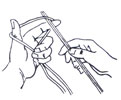
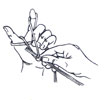
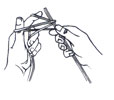
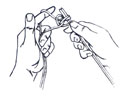
Remember that in descriptions of patterns and finished productsThe first and last loops are not taken into account. They are called marginal. Therefore, if it is said in the product description that it is necessary to collect 15 loops, this means that you need to type 17, but the edge loops do not participate in tying the pattern.
After the loop set is finished, one spokeIt is taken out, the typed loops remain on the second spoke. Now you can start loosing loops. The main loops used in all types of knitwear are the front and back loops. Knit them as follows.
Face loop. There are two ways to knit a facial loop. The classic way is to insert the spoke into the loop with the movement from right to left of yourself, grab the working thread lying on the index finger and pull the loop over by yourself, to loosen the loop from the left knitting needle.
The second way to knit a facial loop is called crossed facial loop or Grandmother's loop. It is as follows: insert the spoke into the loop with the movement from left to right from yourself, grab the working thread and stretch it through the loop, and release the loop.
Wrong loop. As in the case with facial loops, purlThe loops are also knitted in two ways: classical and crossed. In the classical version for tying the purl loop, it is necessary to throw the working thread on the left knitting needle, insert the right knitting needle into the loop with the movement towards yourself and from the right to the left, pull the knitting needle to the right, while moving the thread slightly to the left. Then, from your own movement, grab the working thread with your right needle and pull out the loop, drop the loop.
For tying the wrong crossed loop the working thread is put on the left knitting needle, the right needle is inserted into the loop from left to right to itself, the working thread is grasped by movement from itself and a new loop is pulled out.
